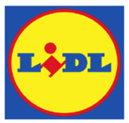Supermarket Wars
In the latest battle involving supermarkets in the UK courts, Tesco has been found to have infringed Lidl’s registered trade marks and copyright, as well as to have committed passing off, through the use of signage in its Clubcard campaign.
The judge’s decision of 19 April 2023 was heavily influenced by the evidence put forward by Lidl, and the full judgment can be found here.
Background
The claimant in this case, Lidl, will be familiar to all as one of the UK’s leading discount supermarket chains, founded in Germany in 1973 and opening in the UK in 1994. Lidl owns various UK trade mark registrations featuring the word LIDL, including in the logo format shown below. It also owns various registrations for a “wordless” version of the logo:


The defendant, Tesco, is perhaps even more well known to UK consumers, being the UK’s single biggest supermarket operator. In 2020, Tesco launched a number of new marketing strategies, increasing efforts to compete on pricing with budget supermarkets such as Aldi and Lidl. As part of this strategy, Tesco introduced an “Aldi Price Match” promotion, meeting Aldi’s pricing on a limited range of key products. Later in the year, Tesco began to promote its Clubcard loyalty scheme more heavily, displaying eye-catching new Clubcard signage at its stores and in advertising.
Claims and counterclaims
The similarities between the format and colour scheme of the background to the signage did not go unnoticed by Lidl, who launched proceedings in the High Court, alleging that use of Clubcard Signs infringed its registered trade marks by taking advantage of their reputation, riding on the coat-tails of “Lidl’s reputation as a “discounter” supermarket”, and / or diluting their distinctive character under section 10(3) of the UK’s Trade Marks Act 1994.
Lidl also claimed passing off, alleging that Tesco’s use of the Clubcard Signs misrepresented that products sold by Tesco “share the qualities of those of Lidl”, with the implication that they are sold at the same or equivalent price, or have otherwise been price matched with Lidl’s product range. Lidl further claimed copyright infringement had taken place, alleging that Tesco had copied a substantial part of its logo.
In response, Tesco counterclaimed that Lidl had never made genuine use of the Wordless Mark, that the Wordless Mark lacked distinctive character, and that Lidl had acted in bad faith in applying to register the Wordless Mark, with no intention to use it in that format.
It was common ground that the Lidl Logo Mark had a reputation and an enhanced level of distinctive character in the UK, but Tesco strongly disputed that Lidl had any reputation in the Wordless Mark. It was also common ground that Lidl had never made use of the Wordless Mark in isolation. Tesco vigorously denied that the Wordless Mark had any distinctive character, describing it as “utterly devoid of distinctive character”.
The High Court’s Decision
Trade Mark Infringement
To succeed in its claim to trade mark infringement under Section 10(3), Lidl needed to show not only that the signs complained of were similar to its registered marks, but also that the consumer would make a link between the signs, giving rise to detriment / unfair advantage to the repute or distinctive character of its marks, without due cause.
The judge agreed with Lidl that the Clubcard Signs were similar to the Lidl Logo Mark. She concluded that the differences between the marks were not sufficient to outweigh or negate the similarities – the presence of the words LIDL and Clubcard, although both distinctive in their own right, was insufficient to “extinguish…the strong impression of similarity conveyed by their backgrounds”. In reaching this decision, the judge relied on her own impression / comparison of the marks, but also pointed to the “clear evidence” that members of Tesco’s internal team had identified similarities between the signs during the initial development phase of Tesco’s signage.
She also considered that Lidl’s evidence – which included survey, expert and witness evidence – demonstrated actual consumer confusion and price comparison confusion. In her opinion, Lidl had therefore done enough to show that consumers made a link between the signs. In particular, the judge found evidence particularly persuasive that many members of the public had contacted Lidl and Tesco, identifying a “perceived link” between the signs. Given the weight of evidence, she did not accept Tesco’s argument that, in the context of the enormous number of consumers who had been exposed to Tesco’s Clubcard promotion (perhaps 50% of the UK), those making a link were “outliers” (ie unrepresentative of the average consumer).
The judge went on to conclude that Tesco’s use of the Clubcard Signs was sufficient to cause detriment to the distinctive character of the Lidl Logo Mark. She accepted that it was difficult for any brand owner to evidence a dilution of distinctive character, given that this process may ultimately take place over a long period of time, but placed weight on the fact that Lidl had considered it necessary to begin a “corrective” advertising campaign, to demonstrate the higher prices of Tesco Clubcard products versus Lidl products.
The judge also found that Tesco had – though not deliberately – taken unfair advantage of the repute of the Lidl Logo Mark for low price value, as the Clubcard Signs were intended to “convey value and thereby to influence the economic behaviour of supermarket shoppers”. In reaching this decision, the judge drew attention to the evidence of one witness, in particular, confirming he had interpreted Tesco’s Clubcard Signs as guaranteeing the same prices as Lidl.
Ultimately, the judge rejected Tesco’s arguments that it had due cause to use the Clubcard Signs, on the basis that blue was one of its corporate colours and that yellow has “the best impact” for point-of-sale materials. Tesco also argued, to no avail, that the use of yellow and basic geometric shapes was “entirely commonplace” in the industry. None of these arguments were considered sufficient to justify the use of the yellow roundel on a blue background, in the particular configuration of the Clubcard Signs adopted by Tesco.
In summary, Tesco was found to have infringed the Lidl Logo Mark; the judge also concluded that – to the extent the registrations for the Wordless Marks were valid – they were also infringed for the same reasons.
In considering Tesco’s counterclaims, the judge was persuaded that Lidl’s Wordless Mark was distinctive and had been put to genuine use for some goods and services, as survey evidence demonstrated that it was perceived as a distinctive trade mark in its own right by the relevant public, despite the fact that Lidl had never used the Wordless Mark in isolation. The judge relied on earlier caselaw in Specsavers International Healthcare Ltd v Asda Stores Ltd, and drew attention to the fact that Tesco’s internal discussions suggested that Tesco “recognised that the Wordless Mark has a distinctiveness which is separate from, and unaffected by, the addition of the (also distinctive) word ‘Lidl’ (or indeed the distinctive words ‘Clubcard Prices’)”. As a result, Tesco’s counterclaim to revoke the Wordless Marks on the grounds of non-use failed, except for a number of specific goods and services for which no evidence of use had been submitted.
The judgement afforded Tesco a small victory, in that the majority of Lidl’s registrations for the Wordless Mark were found invalid, having been filed in bad faith. An earlier, interim decision from the Court of Appeal had previously held that Tesco’s initial case was sufficient to shift the burden of proof onto Lidl to demonstrate that the Wordless Mark had not been filed in bad faith. The judge concluded that Lidl’s evidence was insufficient to rebut the inference that the earliest Wordless Mark, filed in 1995, was intended merely for use as a “legal weapon”, Lidl having no actual intention to use it in that format. The majority of Lidl’s later registrations (filed in 2002, 2005 and 2007) for the same Wordless Mark were also found invalid for the same reasons, as Lidl was unable to demonstrate that these later applications had been filed for a different reason. In all the circumstances, the judge considered most of these later registrations were designed, at least in part, to “evergreen” Lidl’s rights, with the aim of avoiding non-use sanctions. Nevertheless, Lidl had done enough to refute the claim that its final UK application for registration of the Wordless Mark had been filed in bad faith. This last application was submitted in 2021, after an 11 year gap, and covered an extended list of goods and services; Lidl had put forward stronger subjective evidence that it believed, by that date, the Wordless Marks had been put to genuine use.
Passing Off
The judge concluded that Tesco’s use of the Clubcard Signs amounted to passing off, since creation of the link with Lidl’s trade marks amounted to a misrepresentation that was sufficient to establish consumer deception. She accepted Lidl’s arguments that consumers would mistakenly believe Tesco’s Clubcard pricing is the same or lower than the price offered by Lidl for equivalent goods, causing damage to Lidl (loss of customers). Although many consumers would not be confused, the judge concluded it was “clear that a substantial proportion of people will be fooled”.
Copyright Infringement
The judge found that Lidl’s logos were entitled to copyright protection as artistic works (graphic works), and that Tesco’s Clubcard signs copied a substantial part, therefore amounting to copyright infringement.
In reaching this decision, the judge pointed to inconsistencies in Tesco’s evidence, and drew adverse inferences from Tesco’s failure to adduce evidence from the external design agency it had employed to assist with creation of the Clubcard Logos. She also pointed to the “evidential gap” in the case Tesco had put forward, which was conceded by Tesco’s counsel, and which undermined the contention that the designs had been independently created.
Comment
Many in the trade mark profession have expressed surprise that Lidl’s infringement claims succeeded, particularly given the prominence and distinctiveness of the Clubcard and LIDL marks within the signs being compared. It could well be that the majority of consumers are not in practice confused or make no link between the marks at all. Nevertheless, this decision demonstrates the enhanced protection that may be enjoyed by reputed marks, and the risks of adopting a mark which calls to mind that of a third party (even where the later user genuinely believes that consumer confusion is not likely to occur). Ultimately, the judge’s assessment of Lidl’s evidence – including evidence of confusion amongst a minority of consumers – heavily influenced the outcome of the decision.
Lidl’s logo forms a key part of its brand identity and had been in use in the UK for more than 20 years in a directly competing sector of the market, by the time Tesco adopted its Clubcard Signs. A later user should be particularly cautious about adopting signage reminiscent of another party’s mark, particularly in the case of house marks or corporate logos, of which brand owners are often extremely protective. The risks of facing an objection are also typically more elevated where the parties are in direct competition, as was the case here. In such instances, it is essential to obtain the opinion of a professional legal advisor on the risks of infringement, and to undertake clearance searches, prior to launch.
Lack of evidence from the design agency engaged to assist in the creation of the Clubcard Logos undermined Tesco’s contention that they had been independently created. Prior to adopting a new mark (whether a word or logo), it is important for brand owners to verify that those involved in the creation process have not been too heavily inspired by a third party, and to ensure that evidence is retained to show how the brand or work was created.
Similarly, brand owners are advised to retain documentary evidence outlining their plans to use a mark in the UK, in order to refute any future allegations of bad faith. The finding that Lidl had made genuine use of its Wordless Logo may appear paradoxical, in the context of a judgment that most of the applications for the Wordless Mark were filed in bad faith. However, the issue of bad faith depends on the trade mark owner’s intentions at the time of filing, and cannot be remedied at a later date.
The decision that it infringed the Lidl Logo Mark will be a blow to Tesco, which had gone to great lengths in its efforts to invalidate the Wordless Marks on the grounds of bad faith. However, the outcome of this case has no impact on Tesco’s ability to use the Clubcard name, in isolation or in other logo formats, and we understand Tesco is, in any case, appealing the decision.
This article should not be taken as legal advice, it is for guidance only.

